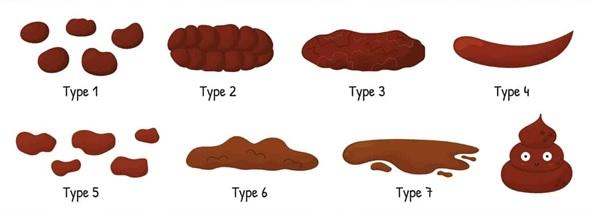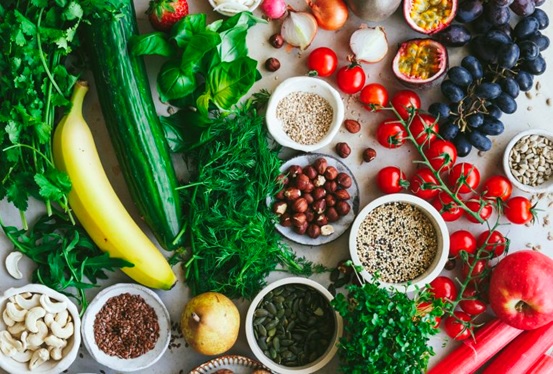
What if there was an easy and inexpensive way to look and feel physically better? It turns out there is. Research shows that consuming enough fibre and having decent gut health reduces your blood pressure, body fat and risk of dying from diseases like diabetes. Unfortunately most of us don’t know enough about the importance of gut health or are unsure where to start. If you fit this criteria and want to know more about how adding a few legumes to your diet could massively improve how you feel everyday then read below.
What Is Wrong With Our Gut Health?
Statistics show that the average New Zealander’s gut health is pretty abysmal. Nine Kiwis are diagnosed with bowel cancer every single day. We have one of the highest rates of irritable bowel disease in the world and around 5% of us regularly use laxatives to treat constipation. This isn’t anything to write home about. Colorectal cancer is one of the most preventable kinds yet it’s becoming more and more common. The average person is supposed to experience a smooth bowel movement every day (sometimes more, sometimes less) but the sale of laxative and diarrhoea products is ubiquitous. The data shows that the average person’s gut health is in dire need of improvement. The good news is that fixing this issue is relatively easy to do. A few small changes here and there can make a massive difference to the health of your digestive system.
Start By Identifying If Your Gut Is Healthy
The first step is to see where you’re at. Unfortunately this requires an examination of what is in your toilet bowl. The next time you pound the porcelain, have a look at what you’ve produced. A type four on the Bristol Stool Scale (see photo) is the goal. Your stool should be smooth like a torpedo and easy to pass. Anything that resembles hard rabbit pellets is a sign of constipation. Anything too runny with no solid pieces is a sign of diarrhoea. If you’re at either end of the spectrum, you need to increase your fibre intake in order to return to baseline. Another thing to look out for is the colour of the stool. Any sort of medium brown to green shade is considered to be healthy. White poo could be the result of a bile blockage. Yellow may signal a liver or pancreas problem. Bloody stool is a major red flag and you should definitely see a doctor. Although examining your number twos isn’t a particularly glamorous task, it gives you huge insight into the state of your gut health. The next time you go to the toilet, have a look at the shape and colour of your poo. If it doesn’t resemble a nice brown sausage, you need to make a change.

Address Your Fibre Intake
Regardless of whether you’re constipated or experiencing diarrhoea, both situations are symptomatic of fibre deficiency. Increasing your fibre is as simple as eating more plants however you must be careful not to immediately overload the system. Your microbiome (the bugs in your gut that digest food) are accustomed to eating what you regularly feed it. If you go from consuming the same bland foods to spontaneously eating a ton of fibrous plants, it may get overwhelmed. Start by introducing one to three new foods per week. Gastroenterologist Dr Will Bulsiewicz says your microbiota can be trained like a muscle to digest a variety of foods if you introduce them gradually. Some decent options to start including are:
- Fruit (banana, avocado, apple)
- Fermented foods (kimchi, yoghurt, sauerkraut, yeast)
- Greens (spinach, broccoli, kale)
- Grains (rice, NZProtein oats, corn, psyllium husks)
- Omega 3 Fats (chia seeds, LSA, walnuts)
- Aromatics (onion, garlic, cinnamon)
- Legumes (edamame fettuccine, peanuts, chickpeas)
- Seaweed (algae, kelp)
- Sprouts (mung beans, radish, alfalfa)

Pretty much anything that grows in the ground or on a tree will be beneficial for gut health. Pick a couple of the different options you listed above and start adding them to your diet in larger quantities. Some sneaky ways to increase your fibre intake without noticing include putting LSA into your smoothies, having edamame pasta for lunch or garnishing your dinners with nutritional yeast. There are so many ways to get more plants in your everyday diet, you just have to be creative and consistent.

Exercise Helps Your Gut Too
In addition to a diverse diet, regular exercise does wonders for gut health. If you’re not already moving your body daily, this is another good reason to start now. Everybody already knows that exercise helps you live longer and wards off preventable diseases but who knew it was great for the gut too? Research shows that working out often improves the diversity of your gut bacteria. Having a variety of gut bacteria is beneficial for digestion, immunity and health in general. This is why experts encourage you to eat a wide range of different foods, not just the same stuff every day. Variety truly is the spice of life. Exercise also benefits the gut by strengthening your gastrointestinal tract muscles. This enables food to move through your gut more freely and easily. You might notice an increase in the frequency of bowel movements after starting a new workout regime and you also won’t have to strain as much to get them out. If this doesn’t motivate you to train more often then nothing will!
Conclusion
Talking about gut health is becoming trendier these days and for a good reason. A dodgy digestive system diminishes your quality of life and increases the likelihood that you’ll die from preventable diseases. The next time you use the loo, assess the colour and shape of your stool. If it doesn’t resemble a healthy brown sausage, it’s time to eat more plants and schedule a few workout sessions. In life you will regret many things, but prioritising your gut health definitely won’t be one of them.
Written by Lauren Carruthers.
